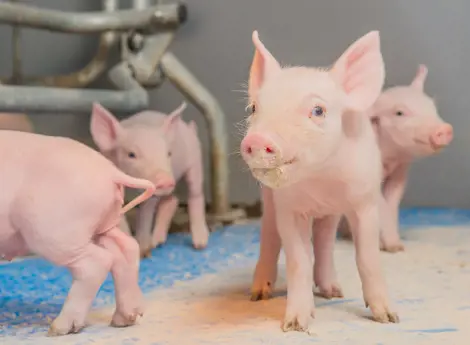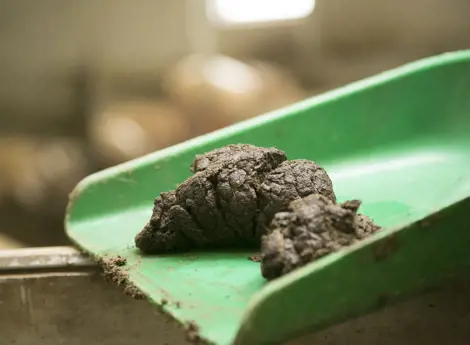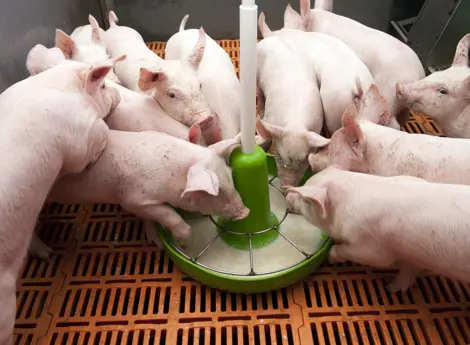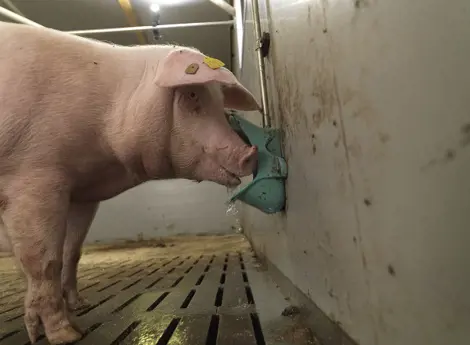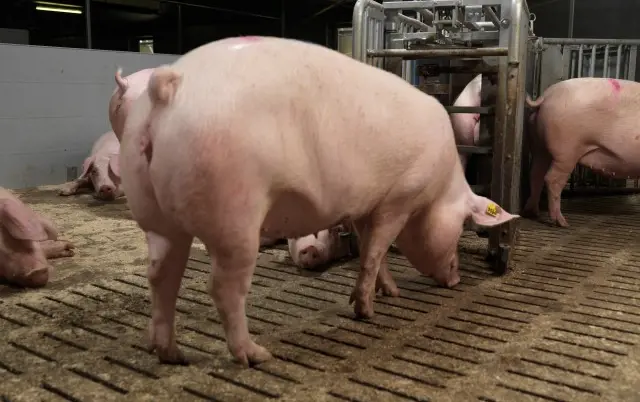
The number of piglet born per sow has only increased in recent years. High piglet production places a high demand on nutrition, housing and health care. A sow in the farrowing room that is about to farrow must be in top condition. A periparturient sow with many piglets has a negative energy balance. Slight adverse health issues only reinforce the situation. Sows that are sick, as well as animals suffering from chronic sickness, do not perform as well because of this. This also applies to sows that are still recovering from an infection. These problems manifest themselves in various ways, including lower milk production. The following illnesses play a role in the farrowing room:
- Flu
- Urinary tract infections
- Foot health
Flu
A flu infection (with or without PRRS) is a prominent cause of problems in the farrowing pen. A result of this is less feed intake. Flu has primarily been known as a sickness with clearly visible symptoms. We expect to see a sow that is ill with fever and possibly abortions. We also assume that the infection will rapidly disappear from the farm. In reality, blood analyses show that many antibodies against flu are present, even if there were no vaccinations, without detecting any unusual signs among the sows. In other words, flu also occurs without any clear symptoms of illness.
In case of flu you can ask for check up to determine whether the weaned piglets are also infected. Examining the saliva using a cotton cloth is an simple method for this purpose
On large farms the infection would in fact appear to be continuously present. Sows, that at the end of gestation, experience a flu infection are not fit in the farrowing room. This may be paired with reduced feed intake and poor initial milk production. While the flu syndrome is familiar, it is extremely difficult to convincingly diagnose it in actual practice. Especially when the sows are being vaccinated. The classical diagnosis consists of the paired blood analysis of 'sick' sows. In this regard, the first sample is taken immediately and the second sample is taken three to four weeks later. Another convenient method, however, is the PCR virus diagnostic. This involves analysing saliva for the presence of the flu virus. This can also be done with the saliva of weaned piglets (using a cotton cloth).
Urinary Tract Infections
Recently research was conducted into urinary tract infections among sows in Flanders (Belgium). The results showed that 18 percent of younger and as high as 38 percent of older animals, have an infection. These infections can migrate to the kidneys, causing the sow to become seriously ill. These animals also have an elevated probability of uterine infections. A bladder infection does not cause the sow to become really sick. The infection generally is of a chronic nature, but nevertheless places continuous demands on the sow's energy. The sow is not fit and is likely to have more difficulty feeding in the farrowing room and milk production does not reach proper levels.
Examination of urinary tract infections can best be conducted using the morning urine of periparturient experienced sows.
To diagnose urinary tract infections, we generally take urine samples from twenty to thirty sows. The best time to do this is in the morning when the first person opens the door to the barn. This is when the sows get up and subsequently start urinating. We prefer to sample the more older, periparturient sows. You can use empty coffee cups, for example, for this purpose. The samples can be analysed on the farm using the same urine stick used by GPs. The stick in particular demonstrates the presence of nitrite. However, the Flemish research shows that the urine contains nitrite in only half of the cases of urinary tract infections. Coli-type infections in particular produce nitrite. The actual percentage of urinary tract infections is double that established by this test. So it is better to prepare a culture of each urine sample. In that case, the laboratory must analyse the urine.
Foot Health
Foot health varies from farm to farm. On some farms, general hoof conditions are very moderate. Sows with imperfect claws often suffer from a chronic infection. Similar to urinary tract infections, this consumes a great deal of the animal's energy. Furthermore, the periparturient sow will be far less likely to get up to consume feed in the farrowing room. This of course also applies after farrowing. As a result milk production is slow to get going. You can determine the condition of the animals' feet on your farm by performing the hoof check. At the De Heus Research farm we are currently conducting research into the effect of administering several minerals (such as chelated zinc). At another farm we are determining the effect of foot baths in a group accommodation setting.
If you are interested in the results of want to know how we can help you improving the health of your pigs, please contact one of our local specialists



